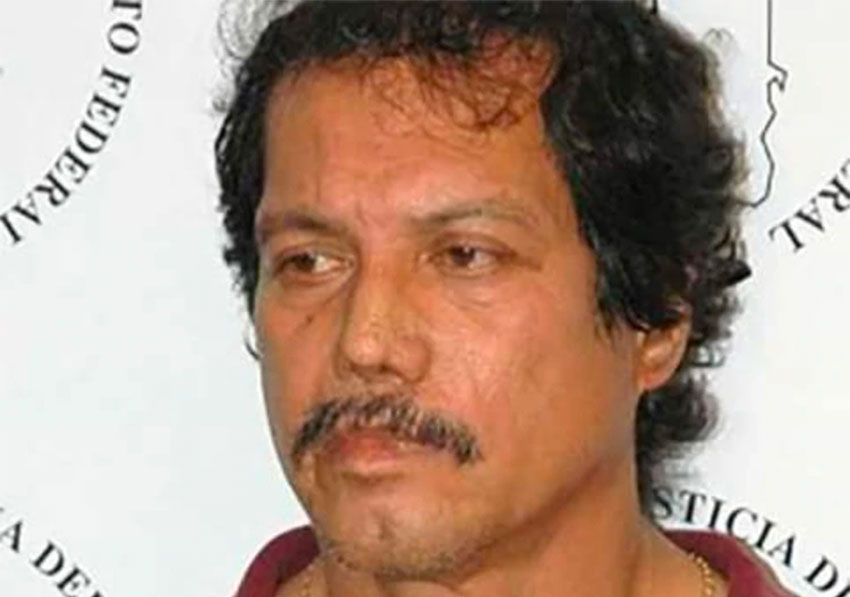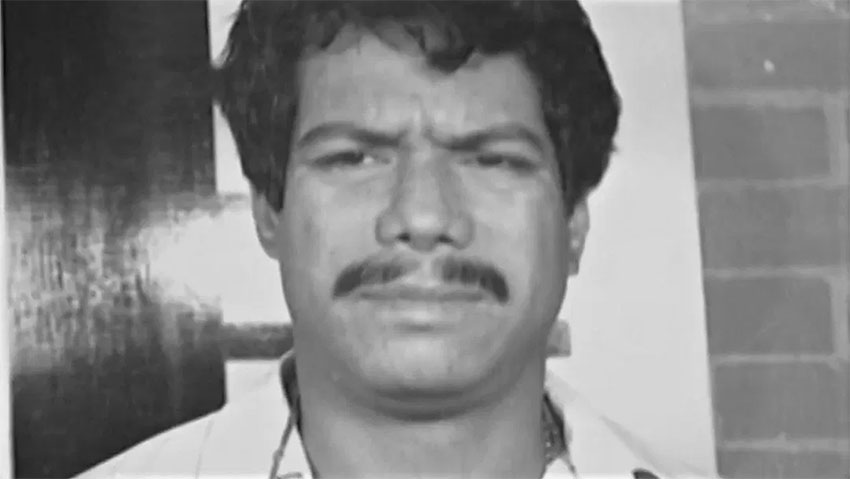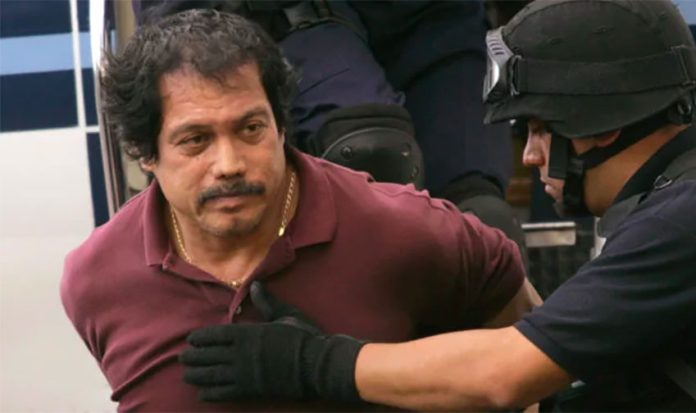Mexico’s most notorious bank robber and public enemy No. 1 in the 1980s died last month, federal authorities said on Wednesday.
Guerrero native Alfredo Ríos Galeana, 69, who was serving a 25-year prison sentence for homicide, was hospitalized in Oaxaca in the middle of December and succumbed days later to sepsis.
“El Feyo,” one of the nicknames by which Ríos was known, is remembered for his prolific criminal career, his three prison breaks and his love of singing and acting.
He is believed to have committed about 100 bank robberies and once boasted that he had held up more banks than any other man in Mexico and the world.
“I’m not proud of what I did but I can say that I will never regret my actions,” Ríos once said. “I lived well, I liked money, to wander around and spend time with women, I had all the fun I wanted to . . .visited every state of the republic, enjoyed the best wine, women and food. And I was able to do all that because of robberies.”

Born on October 28, 1950, in the small town of Arenal de Álvarez, Ríos moved to Mexico City at the age of 17 and enlisted in the army, eventually rising to the rank of sergeant in a paratrooper brigade.
In the mid-1970s he was accused of theft while serving in the military and spent two years in the Palacio de Lecumberri, a former Mexico City prison known as the Black Palace, before he was absolved.
Later in the 1970s, Ríos became a police officer, joining a new México state force called the Radio Patrol Battalion which was tasked with protecting the state’s banks, among other duties. He is believed to have committed his first bank robberies while still an officer in the force.
El Charro del Misterio (The Mysterious Cowboy), as Ríos was also known, formed a gang of bank robbers in the early 1980s, recruiting soldiers and officers that he met during his military and police career. Among the criminals with whom he collaborated were the notorious kidnappers Andrés Calietri and Daniel Arizmendi.
Ríos also wove a web of complicity with authorities that provided protection for his criminal band, the newspaper El Universal reported.
The gang, which made use of a range of disguises including police uniforms, wigs, fake mustaches and make-up and meticulously planned its escape routes, successfully robbed banks in several parts of the country including Mexico City, México state, Puebla, Morelos and Tlaxcala.
But the band’s early successes came to an end in Hidalgo in August 1981 when Ríos was arrested and sent to prison in the same state.
However, he escaped from the penitentiary in late 1982 and returned to a life of crime before he was captured again after robbing a bank in Mexico City in 1984. After just two months in prison in the capital, El Feyo managed to escape for a second time before he was arrested yet again in 1986 and imprisoned in another Mexico City penitentiary.
His third prison break came in a dramatic fashion in late 1986 when a gang of 10 armed men burst into a court hearing, fired their weapons and led Ríos to freedom before the eyes of officials.
By that time, the criminal had stolen 353 million pesos from Mexican banks and committed 15 murders, the newspaper Reforma reported.
With his crimes apparently weighing heavily on his mind, Ríos underwent a course of spiritual treatment that led him to repent for his criminal sins and declare that he was a changed man. He also adopted the pseudonym of Arturo Montoya and soon became known as “el hermano Arturo,” or brother Arturo, due to his preaching and newfound faith while a fugitive from justice.
Ríos also underwent extensive plastic surgery to change his appearance and sometime later snuck into the United States.

It was almost 20 years later that El Feyo’s life of crime caught up with him again: on July 12, 2005, Ríos went to renew his driver’s license at a Department of Motor Vehicles office in Los Angeles, California, where his fingerprints gave away his true identity and he was taken into custody.
The United States extradited Ríos to Mexico the same year and he was imprisoned in México state’s Altiplano maximum security prison, which has housed numerous notorious criminals including Guadalajara Cartel founder Rafael Caro Quintero, the convicted murderer of 1994 presidential candidate Luis Donaldo Colosio, and former Sinaloa Cartel leader and convicted drug trafficker Joaquín “El Chapo” Guzmán, who famously escaped from the jail via a 1.5-kilometer-long tunnel in 2015.
However, El Feyo couldn’t orchestrate his own fourth prison break and in 2015, a decade after he returned to Mexico, he was sentenced to 25 years in jail. Before his death, Ríos had been held at a federal prison in the Oaxaca municipality of Miahuatlán de Porfirio Díaz.
While El Feyo will mostly be remembered for his extensive criminal career and brazen prison breaks, he also leaves a legacy as a recording artist.
One album he recorded under the name of El Charro del Misterio (a name he stole from another artist) was Éxitos de Javier Solís, a compilation of covers of hit songs first sung by Solís, a famous singer of boleros and rancheras.
Ríos also performed in bars and other venues under a variety of different names, the newspaper El Financiero reported. Yet another of his nicknames was “the voice that sings to the heart.”
Ríos’ life is immortalized in two movies, the 2008 action film The Mexican Gangster and El Más Buscado (The Most Wanted), a 2014 Mexican-made feature.
El Feyo might now be gone but he definitely won’t be forgotten. Meanwhile, Mexico’s banks might well be rejoicing: Ríos once famously said that he would continue committing crimes once he got out of jail.
Source: El Universal (sp), Infobae (sp), Reforma (sp), El Financiero (sp), Aristegui Noticias (sp)
